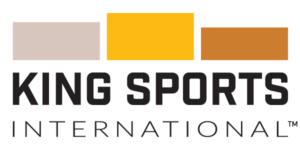I spoke to xxxx (professional) and they said it can’t be so….
There is a phenomenon in sport, and perhaps life, where decisions are made about potential, possibilities and peoples lives from a remote, authoritarian and dogmatic perspective.
But who does it serve? Surely it wouldn’t be that humbling to take a less all-knowing approach?
In the 1980s a young national league Australian Rules player suffered what we now call chronic fatigue. The coach told him “I talked to the trainer and there is nothing wrong with you. You just aren’t fit enough.” So they send him off on a special training camp where he paddled in the ocean for hours, ran along beaches for hours, swam in open seas for hours.
Who does it serve? The coach’s and trainers need to be able to diagnose all conditions, the ego of the trainer about more of their services being needed…but what about the athlete? Would it be so demeaning to seek independent unbiased professional advice? To say “I don’t really know why you are complaining about being tired, but lets explore your situation and find out more to help you get over the condition.”
In the 1990s in the lead up to a World Cup, a head national coach put his team through a grueling training session, applying the dominant trend of the time, which essentially ended the team’s hope of winning (and that’s the opinion of some of the athletes involved in retrospect). Faced with a very tired and sore group of athletes, the head coach told the team: “I have spoken with the support staff and they have all told me you can’t be tired, so you are not tired!”
Who does it serve? The coach’s need to be right, the ego of the professional o feeling good about being remotely all knowing…but what about the athlete? Or the team? Would it be so terrible to say “I don’t really know why you are complaining about being tired, but lets explore your situation and find out more to help us win?”
In the 2000s a provincial level rugby playing hurt his shoulder. The coach, supported by the medical staff, decided he was okay, and sent him back on. He damaged his shoulder so extensively later in that game it shortened his career and affected his quality of life forever.
Who does it serve? It helped the team win that game. It confirmed the coach had full control over medical interpretations….but what about the athlete? Would it have been so scary for the team to lose that player for the rest of the game to prevent future surgery? To have said “I don’t like the thought of losing you in this tight game but based on your concerns lets check out your injury and not take risks with you.”
In the post 2010 decade I was working with a young UK soccer player who was recovering unsuccessfully from surgery. He had entered into an agreement to play for a US college on scholarship, but was in no condition to do so. The head college told him “The physical therapist tells me there is no reason why you cannot play and train so I expect you to turn up on Monday and participate fully.” And that was before the physical therapist had even laid hands on the athlete…
Who does it serve? The interests of the college, the ego of the professional…but what about the athlete? Would it be so dangerous to say “I don’t really know why you are reporting pain or concern, but lets explore your situation and find out more?”
Post 2010 I raised a point of concern with a sports coordinator of a high school about injury risks in a training session. The response included “I have spoken to our strength and condition coach and he tells me that the volume of training the athletes are doing does not represent a risk.”
Who does it serve? The interests of the school, the ego of the professional to be right, to be all knowing…,but what about the athlete? Would it be so bad to say “I don’t really know why you concerned about pain, but lets explore your situation and find out more?”
I don’t know what training is going to do. I have a theory or hypothesis and I take it carefully in case I am off-track. If it turns out I missed the target, then I seek to amend the situation, and learn from it. It’s not that hard if you can put aside the need to be all knowing or be right. I even tell the athlete in advance – I don’t know for sure but this is where I am thinking of going, is that okay, and let’s learn from this. Together. It’s not that difficult.
Who does it serve? The athlete.
